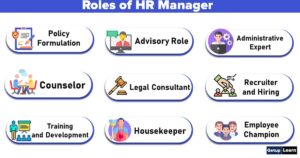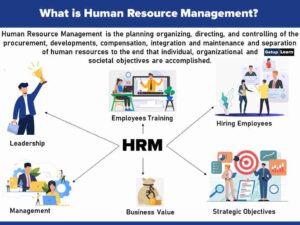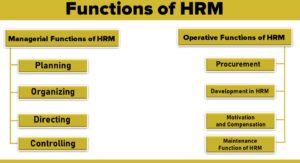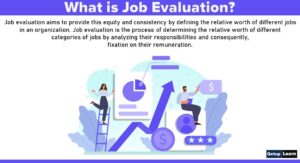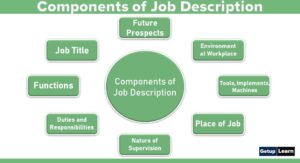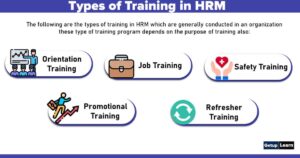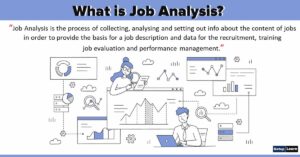Table of Contents
What is HRIS?
Human Resource Information Systems (HRIS) is a process that utilizes information technology for the effective management of human resource functions and applications. It is a computerized system typically comprising a database or interrelated database that tracks employees and their employment-specific information.
In simple words, Human Resources Information System is a system that lets you keep track of all your employees and information about them. It is usually done in a database or, more often, in a series of inter-related databases.
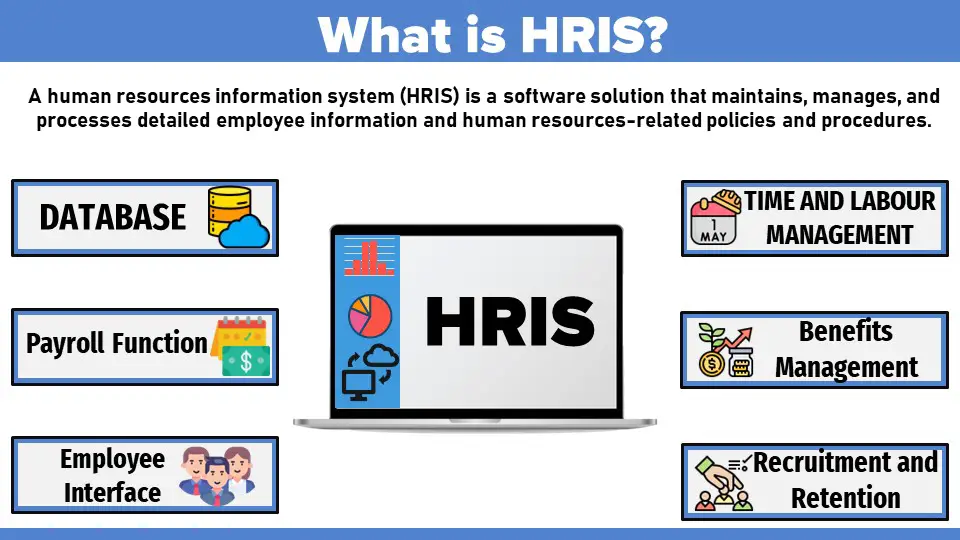
A human resource information system (HRIS) is the system that is used to acquire, store, manipulate, analyze, retrieve and distribute relevant information regarding the human resources within the organization. Therefore, HRIS is the system that is designed for the operative management of the organization. It is not simply hardware or the HR-related software system, but it also includes the individuals, forms, policies, procedures, data, and information.
For a number of reasons, the HR manager needs to have a considerable amount of information. For the implementation of various types of tasks and functions within the organization, an appropriate, comprehensive, and continuous information system is necessary for the organization.
There are various factors that are leading to the adoption of the computerized system within the organization. These systems contribute to the implementation of several tasks, these are the complexity and scale of the compensation system, the intricacy of the job description and job specification, organizational structure and multiplant locations for the organization, complicatedness of legal and statutory requirements, and innovations that are taking place in the field, increase in the number, eminence, and degree of knowledge workers and the unwieldy volume of HR information that needs to be analyzed, classified, interpreted and used.
Definition of HRIS
These are definitions of HRIS (Human Resource Information System) given below:
[su_quote cite=””]The information system of the organization should provide the required information at the correct time at various levels of the organization. So it is essential that the information systems that are designed fulfill all these criteria[/su_quote]
[su_quote cite=”Hedrickson”]HRIS can be briefly defined as integrated systems used to gather, store and analyze information regarding an organization’s human resources.[/su_quote]
[su_quote cite=”Tannenbaum”]HRIS, One which is used to acquire, store, manipulate, analyze, retrieve and distribute information about an organization’s human resources.[/su_quote]
[su_quote cite=””]Human Resource Management Systems (HRMS), Human Resource Information Systems (HRIS), Human resource technology, also called HR modules, is an intersection between human resource management and information technology.[/su_quote]
It merges HRM as a discipline and in particular its basic HR activities and processes with the information technology field, whereas the planning and programming of data processing systems evolved into standardized routines and packages of Enterprise Resource Planning (ERP) software.
On the whole, these ERP systems have their origin in software that integrates information from different applications into one universal database.
Components of HRIS
These are the various components of HRIS explained below:
- Database
- Time and Labour Management
- Payroll Function
- Benefits Management
- Employee Interface
- Recruitment and Retention
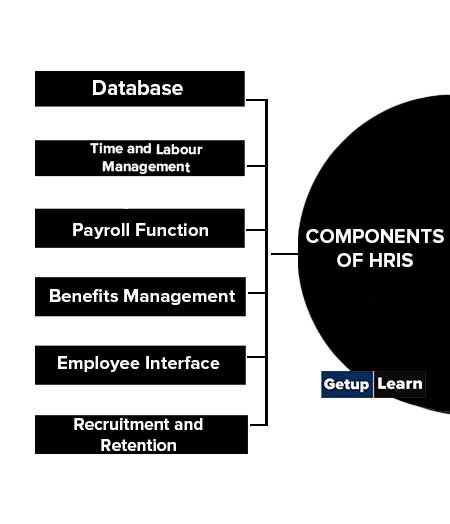
Database
HRIS core offering includes a database to store employee information. HR professionals can input all personnel data into the system which can be accessed from anywhere, round the clock. Types of data that HR professionals collect in the database include compensation history, emergency contact information, and performance review. The core database can also be viewed as an online backup for paper files.
Time and Labour Management
Activities like time and labor management can be highly time-consuming. HRIS package allows employees to input their own hours worked and allows managers to immediately verify vacation requests, and the data is directly fed to the payroll. Time and labor management also improves the HR department’s ability to track punctuality and attendance.
Payroll Function
The payroll function is yet another major component of an HRIS model. HR can easily download or unload employee hours, and issue cheques or payroll deposits to employees. Salaried employees can also be paid with a substantially reduced risk of errors. The HRIS payroll software usually improves tax compliance for locations with multiple tax levels.
Benefits Management
Some HRIS employers allow employers to establish and maintain medical benefits and retirement investments through their software. Such applications allow employers to have a one-stop shopping experience for all their human resources data management needs.
Other HRIS packages facilitate medical benefits and retirement investment deductions for payroll but not the establishment of those benefits.
Employee Interface
Most HRIS packages allow for an employee to have limited user access. Employee users access a part of the database where they can update their personal information, review pay scales, change retirement benefit programs, update direct deposit information, or download benefit election documents.
Recruitment and Retention
Finally, it can be said that recruitment and retention are the most important components of HRIS. It goes without saying that it is the anchor of all HR policies and systems. Finding new talent, acquiring them, keeping them engaged, and finally being able to retain them is the major task of an HR person.
HRs also have to ensure that employees are not only able to do their work but are also provided with the required training; receive proper compensation and benefits from the organization.
Uses of HRIS
Human Resource Information System gathers, classifies, processes, records and disseminates information that is required for efficient and effective management of human resources in the organization. The following are the uses of HRIS:
- Strategic Human Resource Management
- Recruitment and Personnel Administration
- Rewards Management
- Performance Appraisal
- Employee and Labour Relations
- Risk Management
- Workforce Planning
- Human Resource Development
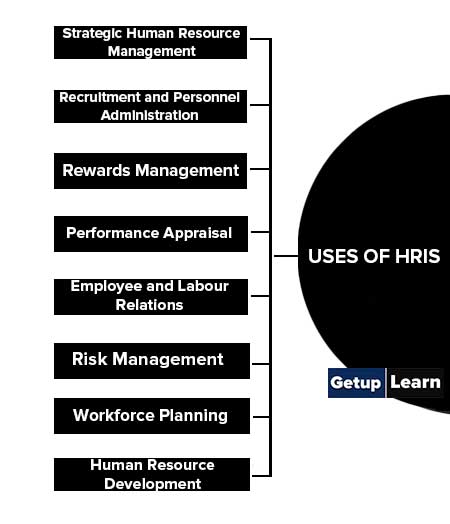
Strategic Human Resource Management
Strategic Human Resource Management is concerned with the adoption of a dynamic vision of human resources and their management. The scope of strategic human resource management covers the planning and implementation of actions and also controls the results which are related to the strategy of the organization.
The Human Resource Information system helps in finding and monitoring the information about the internal and external environments for detecting the opportunities and threats which influence the organizational plans. It also aids in the analysis and development of practices that enhance the quality of human resources and productivity.
Recruitment and Personnel Administration
The Human Resource Information System supports the recruitment process by recording the details of the activities involved in employee recruitment. The information that is supplied by the Human resource information system includes the cost and method of recruitment, vacancies, and time is taken to fill these positions.
After the recruitment and selection procedure is completed, the Human Resource Information System captures the personal information of an employee. It may include personal details and information about the journey of the employee in the organization.
The information which is so collected would describe the employee. Further, the Human Resource Information System would also record and monitor the skills of the employees. It would help the organization in identifying employees with the necessary skills for certain positions or jobs in the organization.
Rewards Management
Rewards in an organization include all the material as well as immaterial benefits which an employee can receive. These rewards depend on the performance of the employee and their contribution toward the achievement of the organizational goals. The rewards might also be dependent on how much the employees identify with the values of the organization.
One of the areas in which the Human Resource Information System helps is regarding the salaries of the employees which includes the data such as the present salary, benefits, increments received, and the increments which are due. They also help in undertaking a comparison between the salaries of the employees in the organization.
Further, the information system also helps in maintaining a detailed record of the leaves taken by the employees. Further, the information system can also help in capturing the entry and exit times of the employees by issuing them a coded identity card that could capture their activities the employees. Such practices reduce the chances of malpractices and oversight in calculating the wages of each employee.
Performance Appraisal
The Human Resource Information system has a comprehensive overview of the employee data such as the due date of the appraisal, potential for promotion, and scores for each criterion of performance.
The supervisor feedback received can be combined with the data obtained from the information system and the combination can be used to devise and implement training programs for the employees for the development of skills that help in promotions and transfers in other divisions.
Employee and Labour Relations
One of the important roles that human resource professionals have is to act as a link between the organization and the employees and the trade unions. As the Human Resource Information System has the entire record of the employees, it would also have records regarding the disciplinary actions, if any taken against the employees. As the result, the manager can defend the actions taken against any employees.
Further, the distribution and allocation of work are also undertaken in a transparent manner. So the unions cannot raise doubts that the management is exploiting the workers. The information also allows the HR manager to undertake an analysis of the attitude and the general climate of the organization.
The information obtained from HRIS also helps the management in undertaking a “what-if analysis” regarding various situations which might arise. This allows the management to reduce the possible frictions which might arise and help in establishing better relations with the employees of the organization.
Risk Management
One of the areas which are critical for the proper functioning of the organization is proper evaluation of the risks involved in undertaking various activities of the organization. As the Human Resource Information system has a detailed record of the employees and the various medical conditions, if any, that they have the activities of the organization can be planned in such a manner that would avoid situations where possible accidents might occur.
The information system also supplies reports regarding highly risky activities which allows the management to take the necessary precautions for minimizing such risks. Such activities would also improve the image of the company in the eye of the employees of the organization.
Workforce Planning
The information system helps the management to place the right people at the right place at the right time as the entire information of the employee is collected by the system. It also helps the management to understand how the goals of the organization can be achieved effectively by aligning the goals of the employees with that of the organization.
With the help of the information provided by the HRIS, the management can make effective decisions about promotions, transfers, whom to hire, and whom to terminate. They also aid the management in devising strategies to make employees living in different areas work together.
HRIS also helps in devising and developing training programs that would help the management to fill in vacancies from within the organization. It aids in the process of identifying a logical path of progression for an employee in an organization.
Human Resource Development
The HRIS also aids the management to understand how the employees of the organization can be effectively motivated and how the productivity of the employees can be increased. The information which is obtained from the HRIS can help in analyzing the careers in the organization and how new career paths can be designed in the organization.
Further, the objective for each career path can also be decided by the organization. Further, the various motivational tools and techniques which can be used to motivate the employees can also be identified by looking at the past performance of the employees in the organization.
With the help of these definite performance goals as well as metrics can be devised and effective performance appraisal, as well as feedback, can be given so that the performance of the employees improves. In this way, HRSI becomes an aid in succession planning.
Functions of HRIS
HRIS functions interactively with human resource management systems such as human resource planning, staffing, training, career development, performance management, and compensation management. The Following are the functions of HRIS:
- Create and Maintain Employee Record
- Ensure Legal Compliance
- Human Resource Planning and Forecasting
- Knowledge Management
- Strategic Alignment
- Enhanced Decision Making
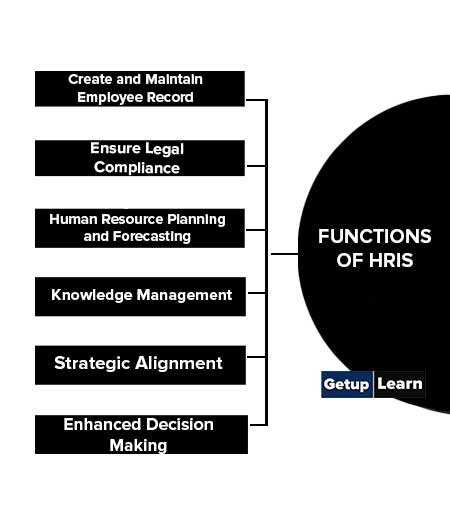
Create and Maintain Employee Record
The data being entered create an employee record and this record is maintained throughout employment. In most organizations, the HRIS administrator is responsible for creating and maintaining these records.
Ensure Legal Compliance
Data entered into the HRIS can be used to help the organization comply with government regulations in an accurate and timely fashion. Ensuring data integrity and accuracy is very important and a key responsibility of human resource professionals.
Human Resource Planning and Forecasting
Information from recruitment, training, and development, and administrative subsystems, such as the number of open positions, types of positions, employee skills and competencies, job rates, retirement eligibility, and employee turnover rates can be used to help managers develop long-range staffing plans and provide valuable information to the human resource professionals.
Knowledge Management
The data that are entered into the system, such as skills, competencies, jobs held, training, and employee development interests, can be used to help managers provide development opportunities for their employees, ensure that the appropriate employees are offered positions that will enhance their skills, provide the appropriate training for employees so that they can advance in the organization, and highlight an employee’s interests and development paths.
This information will help human resource professionals to provide more targeted advice and counsel to managers to create a development plan that meets organizational and employee needs.
Strategic Alignment
Information from the system can help organizations align human resource activities more effectively with their strategic plan.
Enhanced Decision Making
The ability to extract data from the HRIS and use these data not just to create information but also to improve the quality of management decisions has become increasingly important. Information needs to be relevant, useful, timely, and accurate.
Advantages of HRIS
The following are the advantages of HRIS:
- For large organizations that employ a very large number of people, it becomes necessary to employ Human Resources Information System.
- In a geographically dispersed company, every office requires timely and accurate information about manpower. If information is stored in multiple locations, costs and inaccuracy will increase.
- Modern-day compensation package is complex consisting of many allowances and deductions.
- An employer has to comply with several labor laws. A computerized information system would store and retrieve data quickly and correctly enabling the employer to comply with statutory requirements.
- With the help of a computerized personnel information system, employee records and files can be integrated for fast retrieval, cross-referencing, and forecasting.
- Necessary flexibility for adaptation to changes in the environment can be built into a mechanized information system.
What is the meaning of HRIS?
Human Resource Information Systems (HRIS) is a process that utilizes information technology for the effective management of human resource functions and applications. It is a computerized system typically comprising a database or interrelated database that tracks employees and their employment-specific information It can be briefly defined as an integrated system used to gather, store and analyze information regarding an organization’s human resources.
What are the 4 components of HRIS?
The following are components of HRIS: Database, Time and Labour Management, Payroll Function, Benefits Management, Employee Interface, Recruitment, and Retention, etc.
What are the 5 benefits of HRIS?
These are the 5 benefits of HRIS:
1. Helps in Strategic Human Resource Management
2. Helps in Recruitment and Personnel Administration
3. Helps in Rewards Management
4. Helps in Performance Appraisal
5. Helps in Employee and Labour Relations
6. Helps in Risk Management
7. Helps in Workforce Planning
8. Helps in Human Resource Development etc.
What are the functions of HRIS?
The Following are the functions of HRIS:
1. Create and Maintain Employee Record
2. Ensure Legal Compliance
3. Human Resource Planning and Forecasting
4. Knowledge Management
5. Strategic Alignment
6. Enhanced Decision Making etc.

